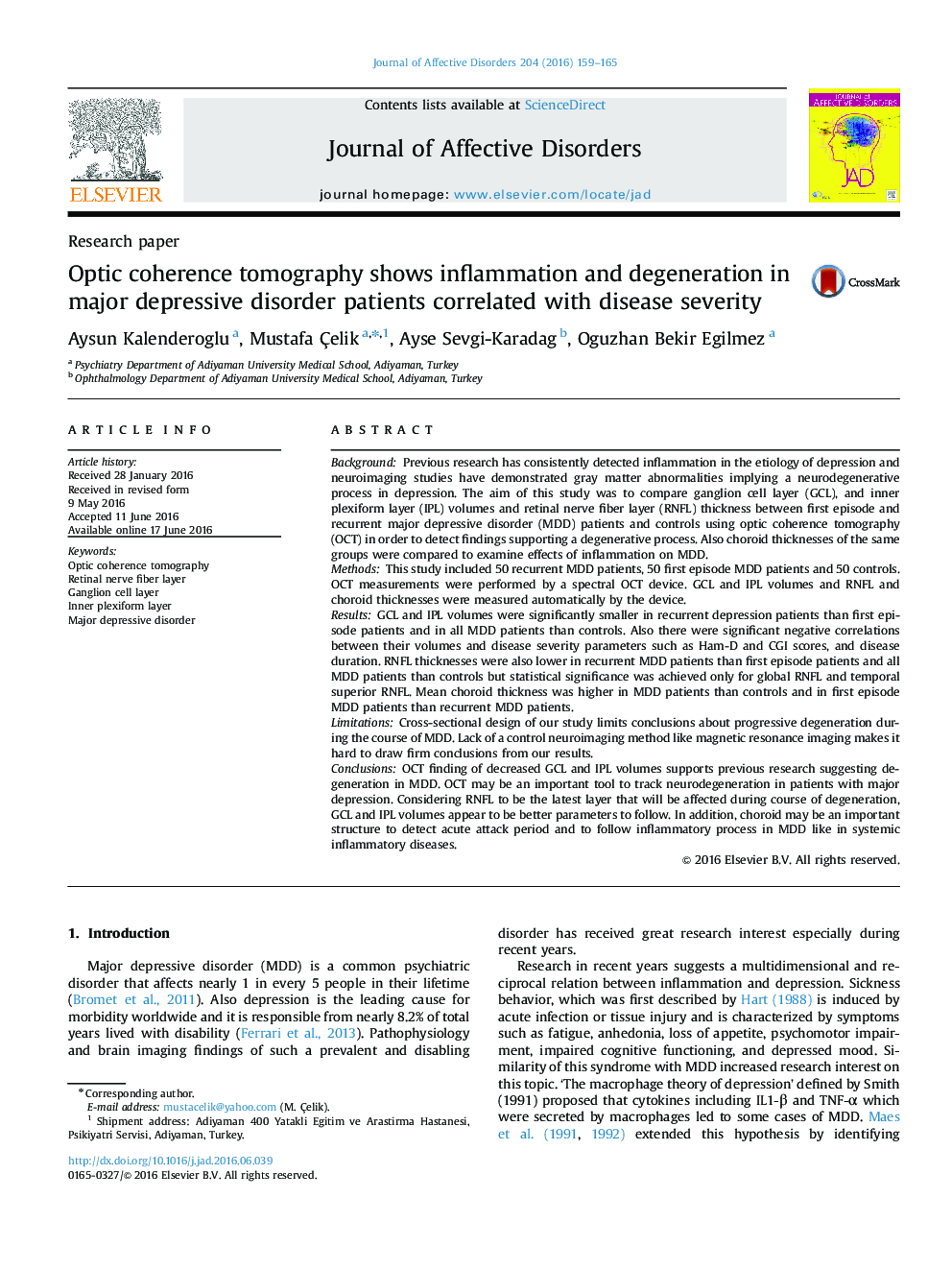| کد مقاله | کد نشریه | سال انتشار | مقاله انگلیسی | نسخه تمام متن |
|---|---|---|---|---|
| 6229611 | 1608121 | 2016 | 7 صفحه PDF | دانلود رایگان |
- Optic coherence tomography was used to detect inflammation and neurodegeneration in depression.
- Choroid thickness showing inflammation was higher in first episode depressive patients.
- Ganglion cell layer volume decreased in depression patients implying neurodegeneration.
BackgroundPrevious research has consistently detected inflammation in the etiology of depression and neuroimaging studies have demonstrated gray matter abnormalities implying a neurodegenerative process in depression. The aim of this study was to compare ganglion cell layer (GCL), and inner plexiform layer (IPL) volumes and retinal nerve fiber layer (RNFL) thickness between first episode and recurrent major depressive disorder (MDD) patients and controls using optic coherence tomography (OCT) in order to detect findings supporting a degenerative process. Also choroid thicknesses of the same groups were compared to examine effects of inflammation on MDD.MethodsThis study included 50 recurrent MDD patients, 50 first episode MDD patients and 50 controls. OCT measurements were performed by a spectral OCT device. GCL and IPL volumes and RNFL and choroid thicknesses were measured automatically by the device.ResultsGCL and IPL volumes were significantly smaller in recurrent depression patients than first episode patients and in all MDD patients than controls. Also there were significant negative correlations between their volumes and disease severity parameters such as Ham-D and CGI scores, and disease duration. RNFL thicknesses were also lower in recurrent MDD patients than first episode patients and all MDD patients than controls but statistical significance was achieved only for global RNFL and temporal superior RNFL. Mean choroid thickness was higher in MDD patients than controls and in first episode MDD patients than recurrent MDD patients.LimitationsCross-sectional design of our study limits conclusions about progressive degeneration during the course of MDD. Lack of a control neuroimaging method like magnetic resonance imaging makes it hard to draw firm conclusions from our results.ConclusionsOCT finding of decreased GCL and IPL volumes supports previous research suggesting degeneration in MDD. OCT may be an important tool to track neurodegeneration in patients with major depression. Considering RNFL to be the latest layer that will be affected during course of degeneration, GCL and IPL volumes appear to be better parameters to follow. In addition, choroid may be an important structure to detect acute attack period and to follow inflammatory process in MDD like in systemic inflammatory diseases.
Journal: Journal of Affective Disorders - Volume 204, 1 November 2016, Pages 159-165
